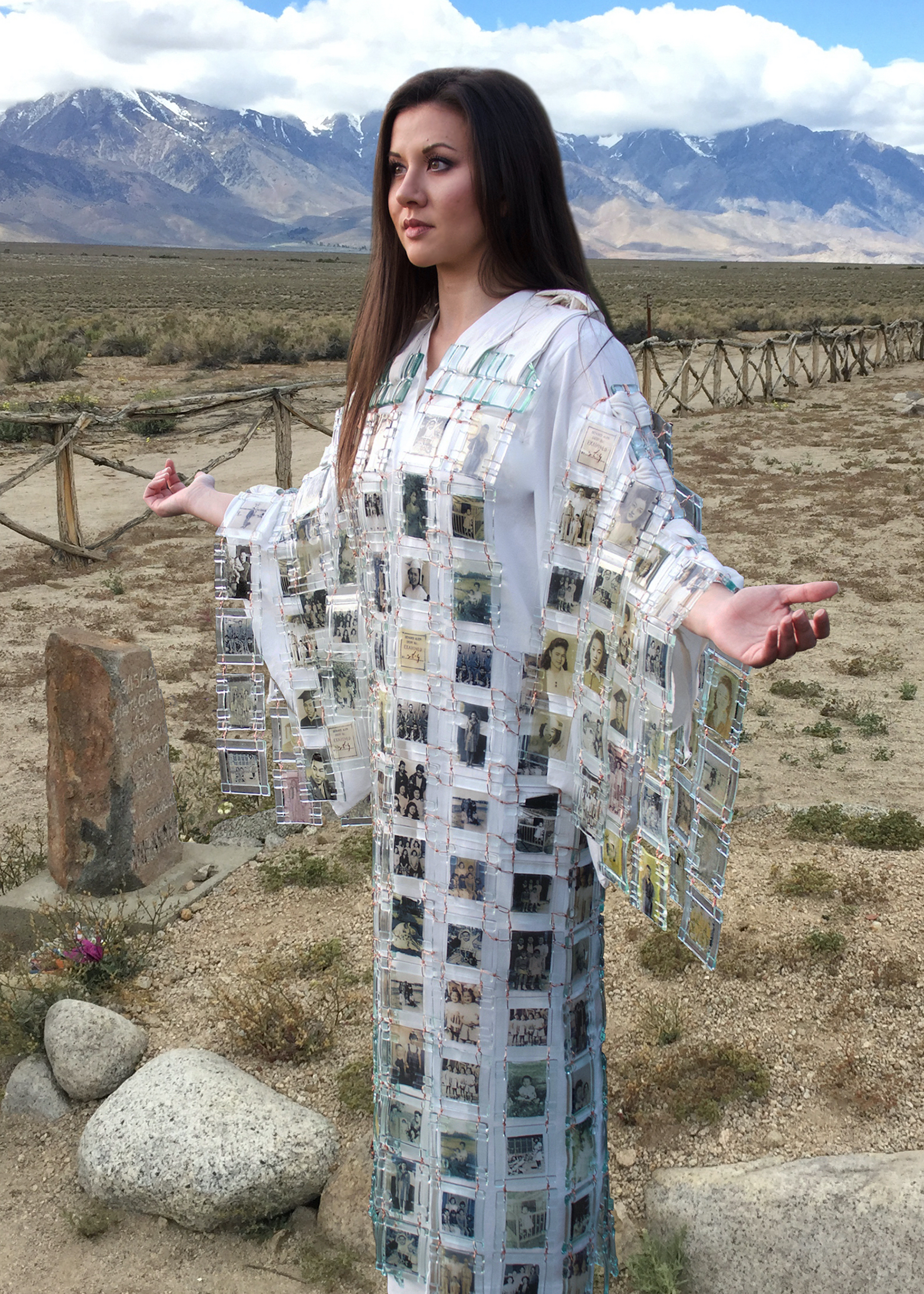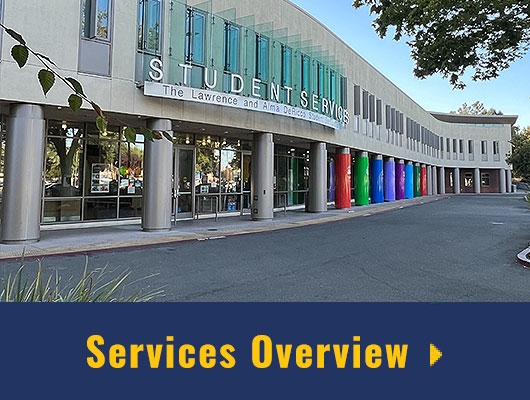
Detained Alien Enemy Glass Kimono, 2016
mixed-media, glass, fused photo decals, copper wire, muslin, 4 x 3.5 x 0.5 ft.
In 2010, as part of her work on a documentary exploring the different attitudes of family, friends, and acquaintances while they were incarcerated in WWII American concentration camps, Reiko Fujii collected personal photographs of her interviewees and their families from their time in the camps. In addition to using these photos in the documentary, she decided to honor their experiences by making a kimono out of glass with their photographic images fused onto it. By the time it was complete, over 2,000 pieces of glass were hand-cut, then fused into 224 glass frames and meticulously tied together with copper wire. Fujii designed this life-size kimono to be worn. When it is, even a slight movement causes the glass frames to strike against one another, creating the sound of wind chimes. She was surprised to discover that during the Obon Festival in Japan, the ancestors are often called back with the sound of wind chimes. The Detained Alien Enemy Glass Kimono honors all prisoners who were unjustly incarcerated in WWII American concentration camps. In this photograph, the kimono is worn by the great-great-granddaughter of immigrants Risaburo and Hanai Inaba, who were arrested along with sixteen of their family members.

Detained Alien Enemy Glass Kimono Being Worn

Detained Alien Enemy Glass Kimono (detail)
Fujii reflects, “When I think about the injustice of our government’s arresting of innocent men, women, and children based on greed and prejudice, causing the loss of property, businesses, possessions, trust, and self-confidence, I am adamant about passing their stories along as a recorded part of American history so that they are not forgotten.”

Detained Alien Enemy Illuminated, (outside), 2016
recycled jars, fused image transfers, water, wood and LED lights, 17.5”h x 19w” x 6.5d”
On the shelves inside of Detained Alien Enemies Illuminated are bottles, which are called Bottled-up Memories. The images are of the participants in the video documentary Detained Alien Enemy and are fused onto recycled bottles and filled with water, which acts as a lens to magnify the images.

Detained Alien Enemy Illuminated, (inside detail)

Egg House Door Installation, 2019
found objects, rice bags, chair, 75h” x 36w” x 30d” NFS
Reiko Fujii uses remnants of her grandparents’ family farm in an installation to tell the story of her family’s history and experiences related to Executive Order 9066. In 2004, the farm was sold to a developer. Fujii, with the help of her friend, Sambodh Quan, was able to save the door and a portion of the egg house wall with her grandmother’s chalk writing.
Chikayasu Inaba, Fujii’s grandfather, was arrested on the streets of Riverside, California on February 21, 1942. During the first year, he ended up being incarcerated in several camps, while the rest of his family was imprisoned in Manzanar, California. They were reunited at the Crystal City Alien Enemy Detention Center, Texas, on June 13, 1943. During their absence, the farm was rented and managed by Mr. and Mrs. George Beck, members of their church who helped to save the property of many of the local incarcerated families. After being imprisoned for four years, the Inaba family was able to return to their farm. The farm had been in Reiko Fujii’s mother’s family for 80 years before it was demolished.

Egg House Door (detail)







